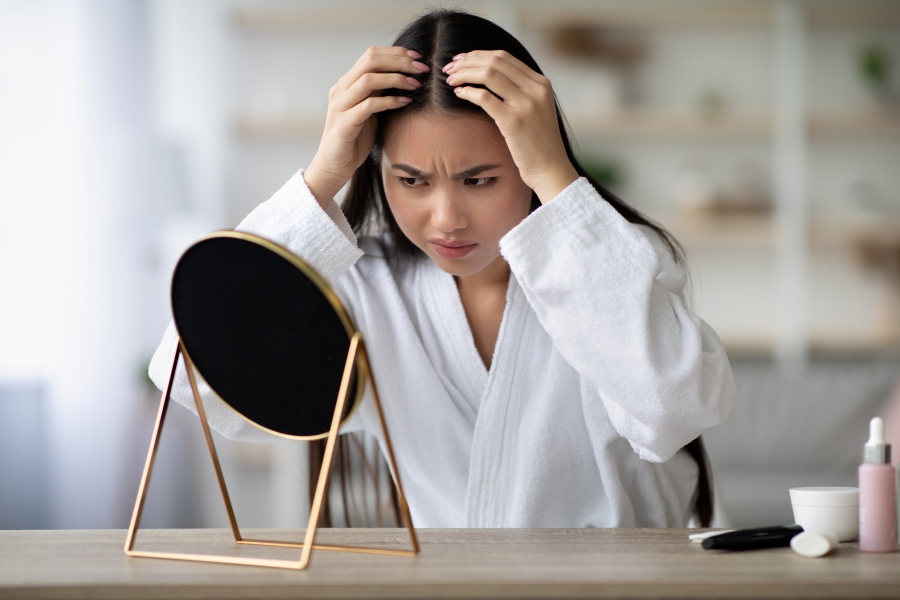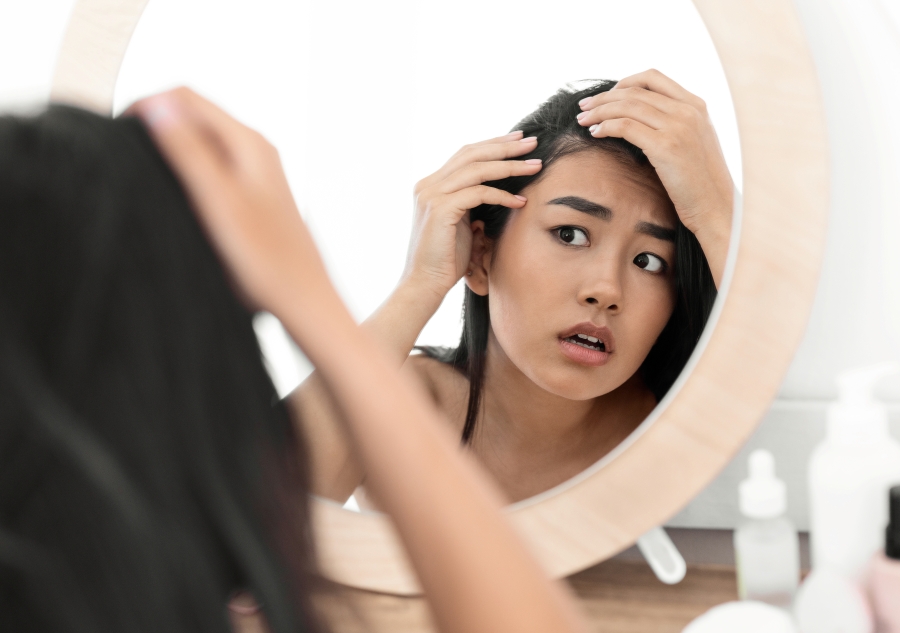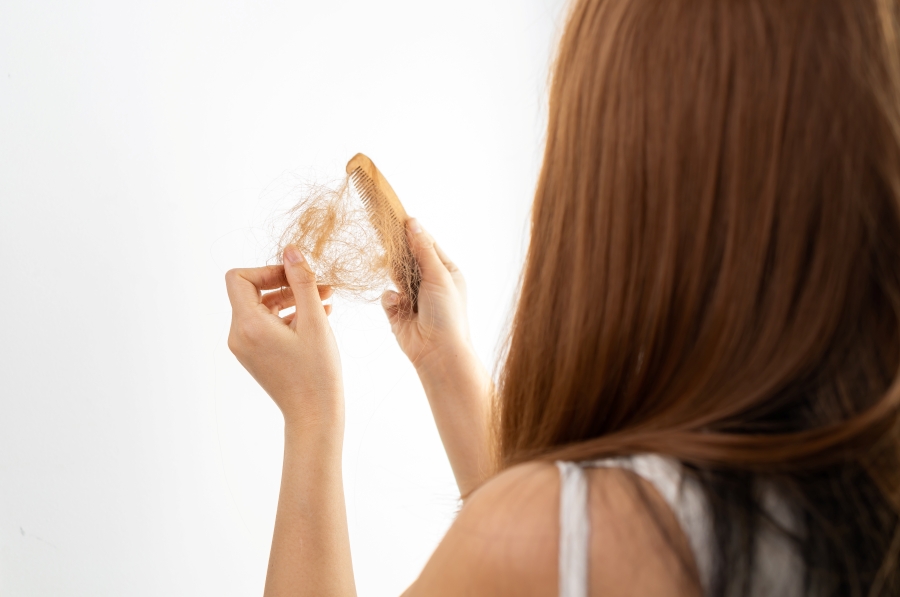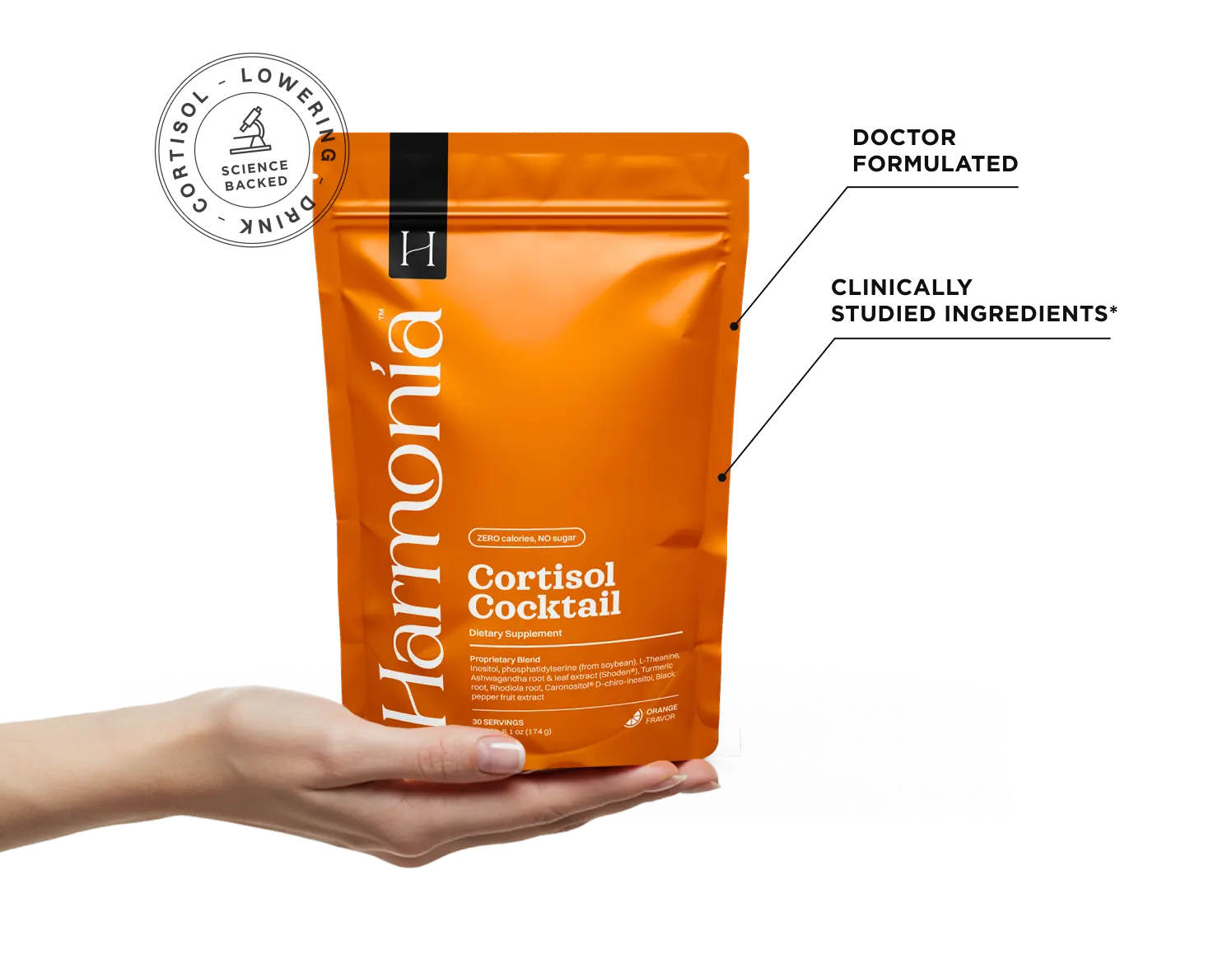If you’ve noticed more strands on your pillow, in the shower drain, or tangled in your brush during stressful times, you’re not alone. Stress-related hair loss is one of the most common concerns for women and men today. While genetics, hormones, and nutrition play their roles, there’s one factor that often gets overlooked: cortisol, the body’s primary stress hormone.
Cortisol is designed to help you survive short-term stress, but when levels stay elevated or become depleted, it disrupts many aspects of health - including your hair. In this guide, we’ll explore how cortisol hair loss happens, the signs to look out for, whether it can be reversed, and what you can do to stop it and support regrowth naturally.
Understanding Cortisol and Its Role in Hair Health
Cortisol is produced by the adrenal glands, tiny but powerful organs that sit atop your kidneys. In healthy rhythms, cortisol peaks in the morning to wake you up and tapers off at night to prepare your body for rest. This daily rise and fall is crucial for energy, immunity, metabolism, and even hair growth.
When the adrenal glands are under constant pressure, however, cortisol production becomes imbalanced. Both high cortisol levels and low cortisol levels can impact hair health.
Chronic stress floods the body with cortisol, which diverts nutrients away from non-essential functions like hair growth. On the flip side, adrenal fatigue and chronically low cortisol can leave the body too depleted to support strong, healthy follicles.
This explains why so many people with adrenal gland dysfunction report hair loss alongside fatigue, poor sleep, and mood swings.
Common Causes of Hair Loss

Before focusing on cortisol specifically, it’s important to recognize that hair loss is multi-factorial. Some of the most common triggers include:
- Genetics (androgenetic alopecia): Often referred to as male- or female-pattern baldness, this is hereditary and progresses gradually.
- Hormonal imbalances: Conditions such as thyroid disease, menopause, or PCOS can disrupt hair cycles.
- Nutrient deficiencies: Lack of iron, vitamin D, protein, or B vitamins weakens follicles.
- Autoimmune conditions: Alopecia areata can cause patchy hair loss when the immune system attacks follicles.
- Medications: Blood pressure drugs, antidepressants, and chemotherapy are well-known culprits.
- Stress: Chronic stress is a powerful trigger, leading to stress-related hair loss and in many cases, cortisol hair loss.
While not every case of shedding is tied to stress, cortisol imbalance is a critical but often hidden factor - and one that can be addressed directly.
Can Cortisol Cause Hair Loss?
The short answer: yes. Both high and low cortisol levels can disrupt the hair cycle.
High cortisol and hair loss
- Prolonged stress raises cortisol, which restricts blood flow to the scalp.
- Nutrients are diverted away from follicles to support vital organs.
- Cortisol increases inflammation, disrupting hormones like estrogen and testosterone that regulate growth.
- Result: Follicles enter the telogen phase prematurely, causing shedding.
Low cortisol and hair loss
- After prolonged stress, adrenal glands can become sluggish.
- Low cortisol is often accompanied by fatigue, low blood pressure, and weakened hair follicles.
- Without balanced cortisol, thyroid and sex hormones can’t function properly, further disrupting hair growth.
Cortisol-Related Hair Loss Symptoms and Signs
Unlike purely genetic hair thinning, cortisol-driven hair loss often shows up suddenly or worsens during periods of high stress. Common signs include:
- Excess shedding: Noticing more hair in the shower, on your pillow, or in your hairbrush.
- Diffuse thinning: Hair looks less dense across the scalp rather than just at the crown or hairline.
- Weakened strands: Hair becomes finer, brittle, or prone to breakage.
- Patchy thinning (telogen effluvium): Stress pushes many follicles into the “resting” phase, leading to noticeable shedding.
- Associated symptoms: Fatigue, poor sleep, mood swings, or anxiety often accompany the hair changes.
Recognizing these signs early is key. Unlike genetic baldness, cortisol hair loss is reversible if you address the root cause.
Stress-Related Hair Loss in Women (and Men)

Hair loss due to stress doesn’t discriminate, but women often notice it more acutely. Hair falling out from stress in females is commonly reported during hormonal transitions like postpartum, menopause, or PCOS - times when cortisol is already imbalanced.
For men, high stress may worsen hereditary baldness, speeding up the timeline of hair thinning. For women, stress often causes diffuse shedding, giving hair a thinner overall appearance.
Beyond the cosmetic effects, the emotional toll is real. Fatigue and hair loss often go hand in hand, creating a vicious cycle: stress worsens hair loss, which leads to anxiety, which raises cortisol even more. Breaking this cycle is crucial for recovery.
Is Cortisol Hair Loss Reversible?
The good news is that yes, stress-related hair loss can be reversed - as long as the underlying cortisol imbalance is corrected.
Hair follicles operate in cycles:
- Anagen (growth phase): lasts several years.
- Catagen (transition phase): lasts a few weeks.
- Telogen (resting/shedding phase): lasts a few months.
When stress pushes many follicles into the telogen phase, it leads to visible shedding - a condition known as telogen effluvium. Once cortisol levels stabilize, follicles can re-enter the growth phase.
Most people begin to see improvement in 3-6 months, though full regrowth can take longer depending on the severity of stress and overall health. Cosmetic treatments like serums or shampoos may help appearance, but addressing cortisol balance is what truly reverses the problem.
How to Stop Hair Loss From Stress (and Support Regrowth)
If you’re asking, how to reverse hair loss from stress or how to stop hair from falling out from stress, the key is restoring balance to your body. Here are evidence-backed strategies:
1. Prioritize sleep
Poor sleep raises cortisol. Aim for 7-9 hours, and create a calming bedtime routine to regulate circadian rhythms.
2. Eat for hormonal balance
Include protein, omega-3s, leafy greens, and antioxidant-rich foods. Avoid ultra-processed foods that spike blood sugar and worsen cortisol imbalance.
3. Move your body (but don’t overdo it)
Gentle strength training, yoga, and walking lower cortisol. Over-exercising, on the other hand, can raise cortisol further.
4. Practice relaxation techniques
Meditation, breathwork, journaling, or even short daily walks reduce stress hormone levels.
5. Support with adaptogens and nutrients
Natural compounds like Ashwagandha, Rhodiola, L-Theanine, magnesium, and B vitamins are clinically shown to regulate cortisol and reduce stress-related hair loss.
A convenient way to get these nutrients together is with Harmonia Cortisol Cocktail, which blends these adaptogens and vitamins into one daily drink to help restore balance from the inside out.
The combination of these changes not only restores healthier hair growth but also improves energy, mood, and resilience.
Smart Support with Harmonia

While lifestyle changes help, many people need extra support to rebalance cortisol. Harmonia provides a science-backed blend of adaptogens, vitamins, and minerals designed to calm stress, balance hormones, and nourish the body.
Key ingredients like Ashwagandha, Rhodiola, L-Theanine, and Inositols work together to lower cortisol naturally, improve sleep, and restore hormonal balance. By addressing stress at its source, Harmonia supports healthier hair growth while boosting mood, focus, and energy.
Conclusion
Hair loss caused by stress and cortisol imbalance can feel overwhelming, but the story doesn’t have to end there. By understanding the link between cortisol and hair health, recognizing the symptoms, and addressing the root causes, you can reverse the process.
The path to recovery is about more than regrowth. It’s about restoring your energy, balancing your hormones, and feeling confident in your own skin again. With lifestyle changes, nutritional support, and intelligent solutions like Harmonia, you can lower cortisol, stop hair loss, and rebuild resilience - one day, and one strand, at a time.
References
- Hadshiew, I. M., Foitzik, K., Arck, P. C., & Paus, R. (2004). Burden of hair loss: stress and the underestimated psychosocial impact of telogen effluvium and androgenetic alopecia. Journal of investigative dermatology, 123(3), 455-457. Link.
- Natarelli, N., Gahoonia, N., & Sivamani, R. K. (2023). Integrative and mechanistic approach to the hair growth cycle and hair loss. Journal of clinical medicine, 12(3), 893. Link.
- Thom, E. (2016). Stress and the Hair Growth Cycle: Cortisol-Induced Hair Growth Disruption. Journal of drugs in dermatology: JDD, 15(8), 1001-1004. Link.







